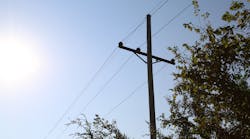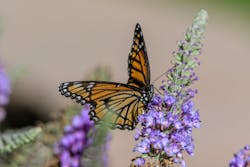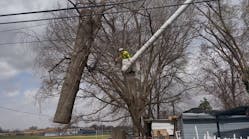Trees & Utilities Conference Tackles the Industry’s Tough Topics
The United States is home to hundreds of millions of trees. Various species thrive in different regions and soils, but despite their differences, the vast majority share similar attributes:
· The threat they pose to electrical transmission reliability
· Their ability to significantly impact environmental sustainability
Utility rights-of-way weave for thousands upon thousands of miles across the country, and these sites frequently cross paths with clusters of trees or full-blown forests. A variety of strategies can be used to control and prevent trees and other woody plants from interfering with utility infrastructure, but certain control methods can have a negative impact on the environment and surrounding wildlife.
Each year, the Utility Arborist Association and Arbor Day Foundation partner to present the Trees & Utilities Conference, which features presentations that explore different trends, research findings and environmental considerations for vegetation managers and urban forestry professionals to consider. This year, carbon reductions and pollinator habitat are two primary topics of interest.
Whether you’ll be attending the 2022 Trees & Utilities Conference or are simply interested in learning about best practices that can simultaneously enhance electrical transmission reliability and environmental sustainability, the following sessions will provide valuable insights for practitioners across the country:
Herbicides: A Solution to Reduce Your Carbon Footprint
Co-presented by Steve Hilbert, technical services manager with Asplundh Tree Expert, LLC; and Brandon Dunlap, vegetation management specialist with Corteva Agriscience, this session will explore the adverse effects of carbon emissions and what utility vegetation management programs can do to effectively reduce their carbon footprint without sacrificing results or productivity.
Hilbert and Dunlap will share findings from recent environmental studies associated with the State Game Lands 33 (SGL 33) research project, which has assessed the environmental impact of various vegetation management strategies for nearly 70 years. Using results from SGL 33 research, this presentation will showcase the following benefits selective herbicide applications can provide when used as part of Integrated Vegetation Management (IVM) programs throughout utility rights-of-way:
· Reduced carbon emissions caused by mechanized mowing
· Enhanced environmental stewardship and sustainability
· Reduced maintenance costs and economic impact
Enhancing ESG Reporting Through Biodiversity Management
Utility companies encounter various degrees of public scrutiny. That’s why many choose to share their values, ethics and actions through Environmental, Social and Governance (ESG) reporting. For utility companies, which often address infrastructure disputes or environmental concerns, ESG reporting can significantly enhance and maintain their invaluable reputation.
For instance, pollinator populations have declined rapidly in recent years, and a loss of habitat has been identified as a primary cause. Utility rights-of-way might not be the biggest culprit for this persistent issue, but they can certainly be part of an applicable solution. Many desirable plant species that support the development of biodiverse wildlife habitat are also compatible with utility infrastructure. This makes utility rights-of-way (ROW) ideal landscapes for restoring native plant communities and dwindling populations of various pollinator species.
Supporting the development of pollinator habitat throughout utility rights-of-way is an effective way for utility companies to positively impact biodiversity and enhance Environmental, Social and Governance reporting.
At the 2022 Trees & Utilities Conference, Iris Caldwell, program manager for sustainable landscapes with the Energy Resources Center at the University of Illinois-Chicago; and Travis Rogers, Market Development Specialist with Corteva Agriscience, will examine what utility vegetation managers can do to not only benefit pollinator species but also public perceptions through ESG reporting. Together, these industry experts will explore ways in which utility companies can leverage their vegetation management programs to align with monitoring reporting requirements of the Monarch Conservation Agreement with Assurances as well as the ESG indices of their preference.
The presentation also will detail decades of environmental research findings, which unveil best practices to support this reporting through the development of biodiverse wildlife habitat, which benefits both habitat development and electrical transmission reliability.
The lineup for this year’s Trees & Utilities Conference is filled with industry-leading experts and priceless insights that can help vegetation managers achieve success in the near and distant future. For more information on this educational event, visit TreesandUtilities.org.
To learn more about IVM-based practices and successful herbicide programs or management techniques that can help enhance environmental sustainability and beneficial wildlife habitat, visit HabitatWithHerbicides.com.
™ ® Trademarks of Corteva Agriscience and its affiliated companies. © 2022 Corteva.
Sponsored By:




